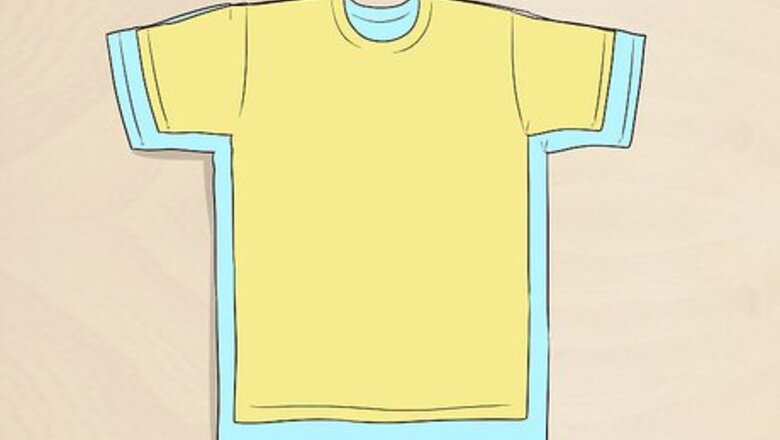
views
Altering a T-Shirt
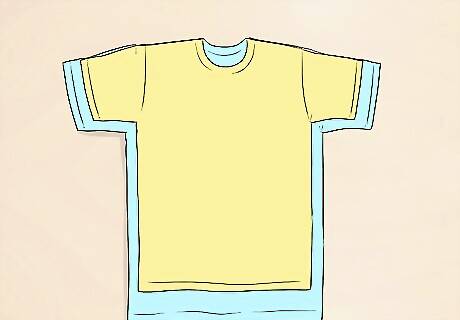
Lay the well-fitting shirt over the ill-fitting shirt. Lay your ill-fitting t-shirt out flat and then lay the well-fitting shirt over it. Make sure that both shirts are flat and lined up at the shoulders and neckline. Leave the t-shirt sleeves on both shirts untucked.

Trace along the edges of the well-fitting shirt. Trace around the outside of the entire shirt including around the underside of the sleeves (around the armpit areas). Make sure that the shoulders and neckline of the t-shirts are lined up.

Cut along the lines you have drawn. Use your scissors to cut straight, even lines following the chalk lines you have drawn on the ill-fitting shirt. Cut around the undersides of the sleeves as well.
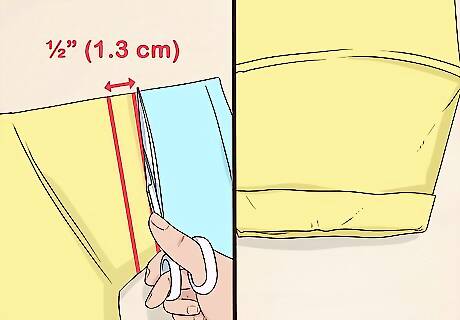
Shorten the sleeves. For a t-shirt, you will only need to adjust the length of your sleeves. Line up the t-shirt sleeves so that the shoulder seams are lined up. Then, use a piece of chalk to trace ½” (1.3 cm) from the end of the well-fitting sleeve. Cut off the excess, and then fold over the end of your sleeve by ½” (1.3 cm) all the way around the sleeve opening. This will be the new hemline for your t-shirt sleeve. EXPERT TIP Daniela Gutierrez-Diaz Daniela Gutierrez-Diaz Clothing Designer Daniela Gutierrez-Diaz is a professional pattern maker and clothing designer at DGpatterns in Vancouver, Canada. With over 5 years of experience, Daniela creates modern and unique silhouettes that are suitable for a busy everyday life. Her blog, On the Cutting Floor, contains sewing tips and PDF sewing patterns for a variety of projects and designs. Daniela Gutierrez-Diaz Daniela Gutierrez-Diaz Clothing Designer Take in a little at a time until the sleeves are the right size. Professional pattern-maker Daniela Gutierrez-Diaz says: "Take in the sides of the sleeve by 1/4" each, so it's reduced by about 1/2" in total. If you need to, adjust the sides by about 1/16" at a time until the sleeves lay flat on the side. Then, take in the cuff by about 1/16". You'll also have to adjust the collar because if you're releasing the shoulder seams, then the corner will also have to be about 1/4" smaller."
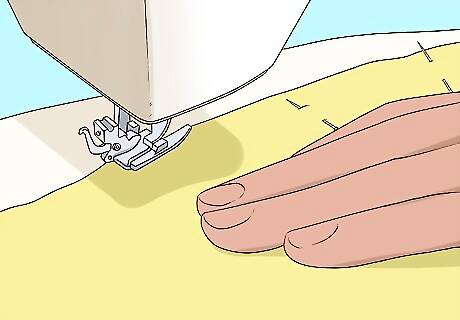
Sew along the edges of the t-shirt. Sew along the edges going from the bottom of the t-shirt to the ends of the sleeves. Then, sew around the pinned areas at the end of the t-shirt sleeves to create your new sleeve hem. Remove the pins as you sew. Your seam should be about ½” (1.3 cm) from the raw edge of the fabric. When you are finished, you can turn your t-shirt inside out and try it on!
Altering a Button-Down Shirt
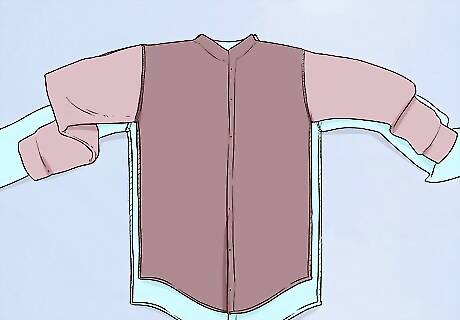
Place a shirt that fits well over your oversized shirt. Turn your oversized shirt inside out and then lay out your oversized shirt so that it is completely flat. Tuck the sleeves of the well-fitting shirt into the armholes before you begin. Leave the sleeves of the ill-fitting shirt untucked and spread out. Make sure that both shirts are buttoned up all the way as well.
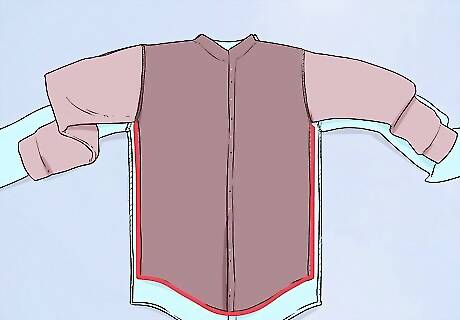
Trace around the edges with chalk. Next, take a piece of chalk and trace around the outer edges of the button-down shirt. Start at the bottom of the shirt and trace ½” (1.3 cm) from the edges of the well-fitting shirt on both sides. This will provide some extra fabric for your seam allowance. Tuck in the sleeves on your well-fitting shirt all the way to the sleeve seam. This is where the shoulder and sleeve meet on your shirt. Do not trace around the sleeves. Only trace around the sleeve openings. EXPERT TIP Daniela Gutierrez-Diaz Daniela Gutierrez-Diaz Clothing Designer Daniela Gutierrez-Diaz is a professional pattern maker and clothing designer at DGpatterns in Vancouver, Canada. With over 5 years of experience, Daniela creates modern and unique silhouettes that are suitable for a busy everyday life. Her blog, On the Cutting Floor, contains sewing tips and PDF sewing patterns for a variety of projects and designs. Daniela Gutierrez-Diaz Daniela Gutierrez-Diaz Clothing Designer Look at every part of the shirt as a separate piece. Professional pattern-maker Daniella Gutierrez-Diaz says: "If you want to alter a dress shirt, every part of the shirt needs to be taken apart and altered individually, including the collar and the cuffs. Bring the sides of the shirt in by about 1/2" to take the shirt one size down, then check the measurements and take it in a little more if you need to. You'll also need to take in the sleeves, although the measurement for the sleeve will be different for everyone."

Cut along the lines you have drawn. Use a sharp pair of scissors to cut along the lines you have drawn onto the ill-fitting shirt. Make sure to cut straight, even lines. Do not cut inside or outside of the lines. Cut right along them. Cut the sleeves completely off of the body piece of the shirt.
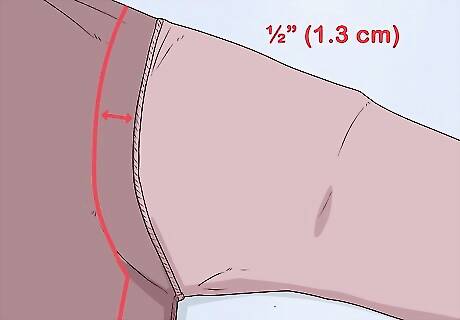
Trim down the sleeves as needed. Leave the sleeves turned inside out to do this. Measure the sleeve length on your ill-fitting shirt against the sleeve length of your well-fitting shirt to determine how much you want to trim them down. To do this, lay the ill-fitting sleeve out flat and then line up the well-fitting sleeve over it so that the sleeve cuffs and top edges are lined up. Make sure that the well-fitting sleeve is flat as well. Trace around the bottom edge and arm seam of your well-fitting sleeve with a piece of chalk leaving a ½” (1.3 cm) seam allowance. Do this for both sleeves.
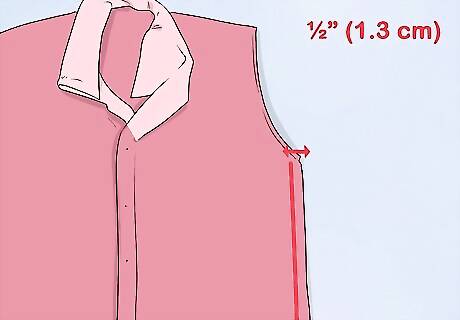
Sew along the edges of the shirt. When you have finished making your adjustments to the t-shirt or button-down shirt, you can sew along the edges to secure the new fit. Sew a straight seam about ½” (1.3 cm) from the edges of the body of the shirt. Do not sew across the armhole openings. Leave these open so that you can reattach the sleeves.
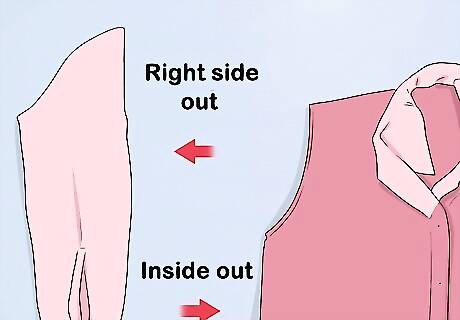
Turn the sleeves right side out. Your body piece will need to remain inside out, but your sleeves will need to be right side out to reattach them properly. Turn the sleeves right side out before you begin.
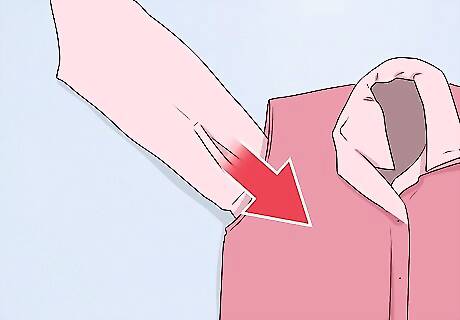
Insert the sleeves through the armhole openings. To line up the edges of your sleeve openings and sleeves, you will need to completely insert the sleeves into the arm openings cuff first. Insert the cuffs into the arm openings and keep going until the ends of your sleeves are lined up with the openings.
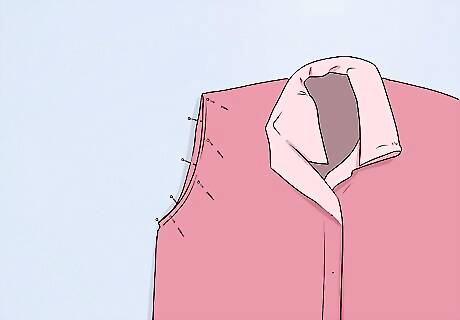
Pin the sleeves in place. After you have inserted the sleeves through the sleeve openings completely, you can pin around the edges to secure them. Make sure that the edges of the sleeves and sleeves openings are lined up evenly.
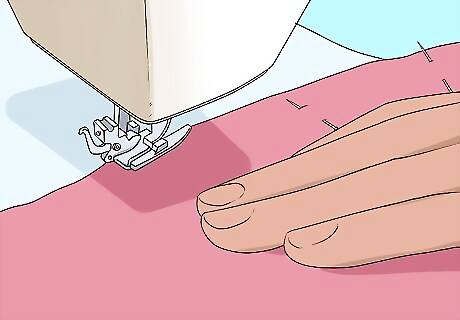
Sew the sleeves back onto the shirt. When you are satisfied with the way the sleeves are pinned, you can sew the sleeves in place. Sew along the pinned edges about ½” (1.3 cm) from the raw edges to secure the sleeves. Remove the pins as you sew. After you finish sewing both sleeves into place, you can turn the shirt inside out and try it on!
Pinching and Pinning Your Shirt
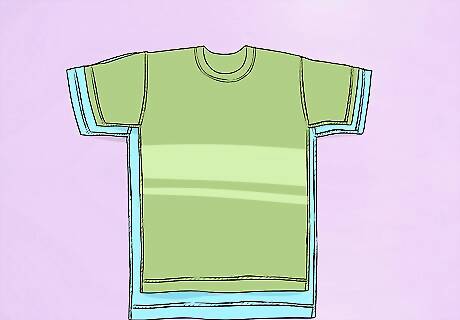
Turn the shirt inside out and put it on. Pinning and pinching is a fairly easy way to improve the fit of a shirt. To get started, all you need to do is turn the shirt inside out and put it on. This way you will be able to sew the areas you have pinned when you remove the shirt. If you are tailoring a button-down shirt, then make sure that you button it up all the way before putting the shirt on.
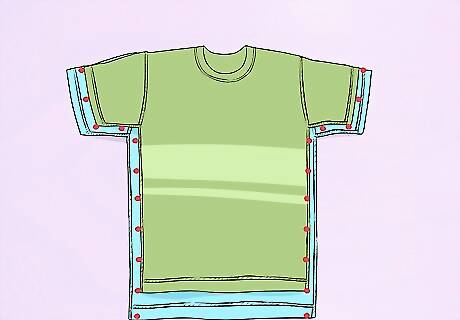
Pinch the areas where you would like the shirt to fit better. Locate the areas of the shirt where it is ill-fitting and pinch them so that they will be the size you’d like them to be. Then, place a pin through the fabric in each of these areas to hold the fabric in place. You may also ask a friend to do this for you if you find it difficult to pinch and pin the shirt you are wearing.

Remove the shirt. When you finish pinning the shirt in all of the areas where the fit is off, carefully take off the shirt. Make sure that you do this carefully and slowly to avoid removing any of the pins in the process.
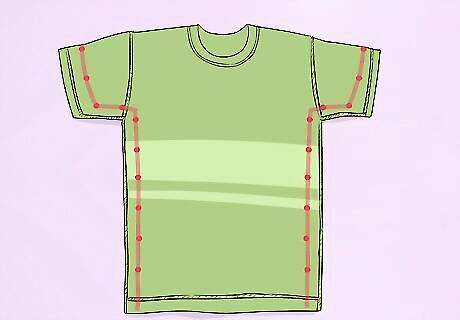
Sew along the edges of the pinned areas. To secure the fabric in the areas you have pinned, sew a straight stitch just outside of the areas you have pinned. Remove the pins as you sew.

Cut away the excess fabric. When you finish sewing along the pinned areas, you will need to cut away the excess fabric that is outside of the seam. Cut about ½” (1.3 cm) from the new seam to remove the excess fabric. After you cut away the excess fabric, your shirt will be ready to wear. Turn it right side out and try it on!















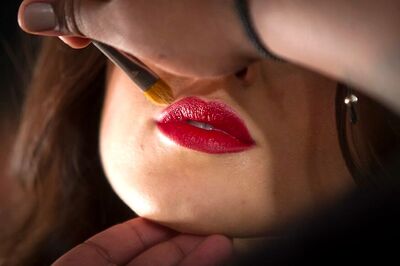

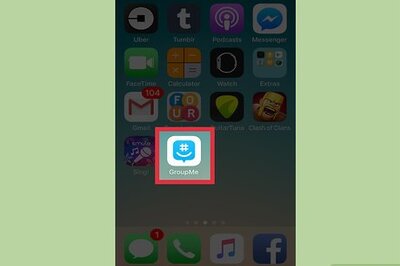

Comments
0 comment